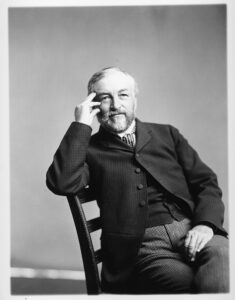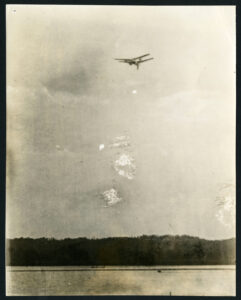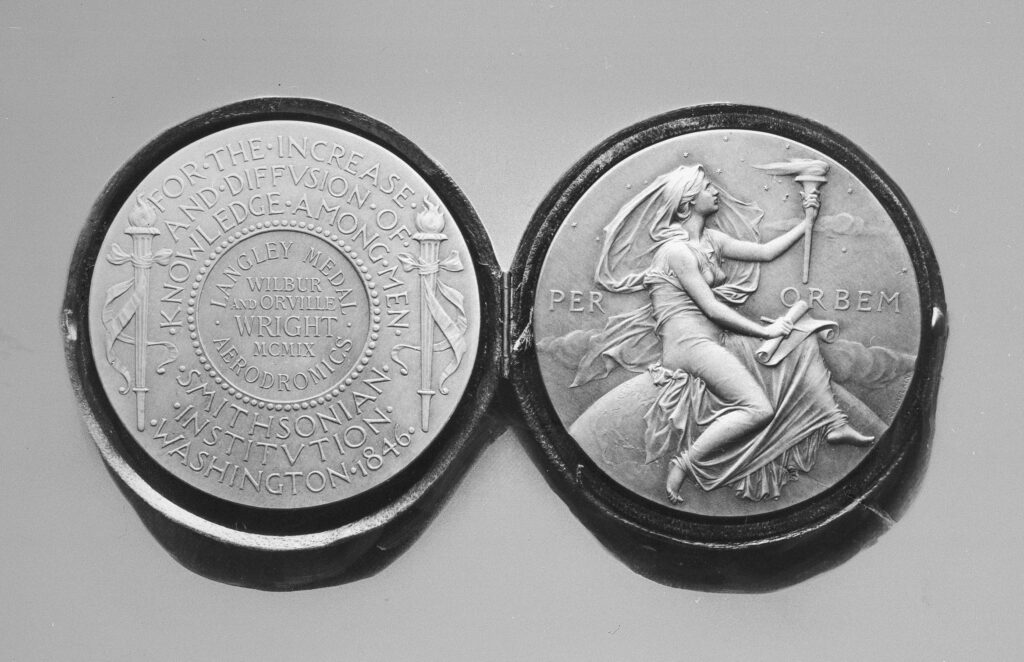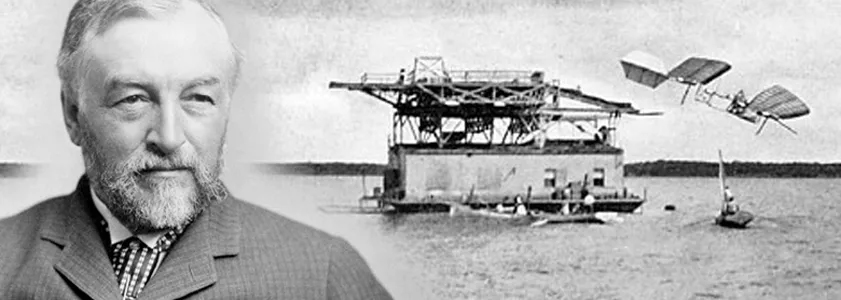Alumni Spotlight
Samuel Pierpont Langley, Class of 1850, The Man Who Almost Beat the Wright Brothers into the Air
When you think of the inventors of aviation, naturally the Wright Brothers come to mind. But Samuel Langley, EHS Class of 1850 wasn’t that far behind. Langley was recognized for his contributions to airflight and enshrined in the National Aviation Hall of fame in 1963.
Samuel Langley was born in Roxbury, Mass., on Aug. 22, 1834. As a boy, he studied diligently and read widely in history, the classics, and various branches of science, but his formal education ended with graduation from The English High School in 1850.

For the next several years Langley worked as an engineer and architect. After a trip abroad in 1864-1865 to visit observatories and research centers, he received an assistantship in the Harvard Observatory, Cambridge, Mass. Later he was put in charge of the small observatory at the Naval Academy in Annapolis, Md. In 1867 he became director of the Allegheny Observatory and professor of physics and astronomy at the Western University of Pennsylvania (now the University of Pittsburgh).
During the next few years Langley devised and sold to the Pennsylvania Railroad a method of regulating railroad time from the observatory clock, and he made a number of visual observations of the solar spectrum, studying particularly the nature of sunspots. In 1878 he invented the bolometer, an instrument for measuring tiny quantities of heat. Through its use Langley was able to measure lunar and solar radiation, study the transparency of the atmosphere to different solar rays, and determine their greater intensity at high altitudes, even beyond the atmosphere altogether. He organized a famous expedition to Mt. Whitney, Calif., in 1881 to carry out this work. Afterward Langley was much in demand as a popular lecturer and author. A collection of his writings, The New Astronomy (1888), has become a classic in astronomical literature. Langley’s concern was not with the traditional astronomy of position but with the newer physics of structure.
Langley was appointed secretary of the Smithsonian Institution in Washington, D. C., in 1887 and served in that post until his death.

S.P. Langley’s Steam-driven Aerodrome No. 5. S.P. Langley’s Steam-driven Aerodrome No. 5 in flight May 6, 1896. From Instantaneous Photograph by A. Graham Bell. The first flight of a heavier-than-air machine propelled by its own power. Photo: The Smithsonian Institution Archives.
During this time he investigated the possibilities of manned flight, studying the lift and drift of moving plane surfaces on a sophisticated scientific basis. Experimenting with small models propelled by elastic strips, he worked out the mathematics of the problem. His contributions to aviation rest not only on the knowledge he acquired and shared with others or upon his successful long-distance flights of power-driven models, but also upon the dignity he brought, as a man of sound scientific reputation, to the new and often-ridiculed field of aeronautics.
In 1896 Langley flew a 14-foot steam-powered model for 3,000 feet with excellent stability, the craft touching down lightly after the fuel was exhausted. A second model flew 4,200 feet, or over three-quarters of a mile. These were the first sustained free flights of powered heavier-than-air machines, and they demonstrated the practicability of mechanical flight. With the advent of the Spanish-American War in 1898, Langley received a $50,000 grant from the U.S. War Department to continue his efforts to achieve manned flight.
Eventually Langley built a full-sized machine driven by a 53-horsepower gasoline engine. He made two well-publicized attempts to fly it in 1903. These flights failed, probably because of defects in the launching device, not because of design or engine malfunction. But Langley was subjected to much public ridicule.
Only 9 days after his second disappointment, the Wright brothers made their historic first flight.
A restored and slightly modified version of Langley’s airplane was flown successfully by Glenn Curtiss in 1914, and Langley’s contributions to flight have been recognized by naming an airfield and an aeronautics laboratory after him.
Samuel Pierpont Langley made outstanding contributions to aviation through his studies of the air and space, his demonstrations of the practicability of mechanical flight, and his inspirational guidance to others.
Langley’s life-long astrophysical studies of the sun, moon, and other heavenly bodies, and his development of instruments for measuring their heat, and other characteristics, also advanced man’s knowledge of space.
Langley was a large, reserved man, though witty and charming in private intercourse. He enjoyed a very high scientific reputation and published many scientific articles and reports, as well as popular accounts of his astronomical and aeronautical experiments. He died at Aiken, S. C., on Feb. 2, 1906. (Some material reprinted from your dictionary)
Postscript: The Langley Medal for Aerodromics

Langley Medal for Aerodromics, is an award given by the Smithsonian Institution for outstanding contributions to the sciences of aeronautics and astronautics. Named in honor of Samuel P. Langley, the Smithsonian’s third Secretary, it was authorized by the Board of Regents in 1909. The first Samuel P. Langley Medals for Aerodromics were awarded to Wilbur and Orville Wright in 1909. Above is a photograph of Langley Medal Awarded to the Wright Brothers. Photo: The Smithsonian Institution Archives

